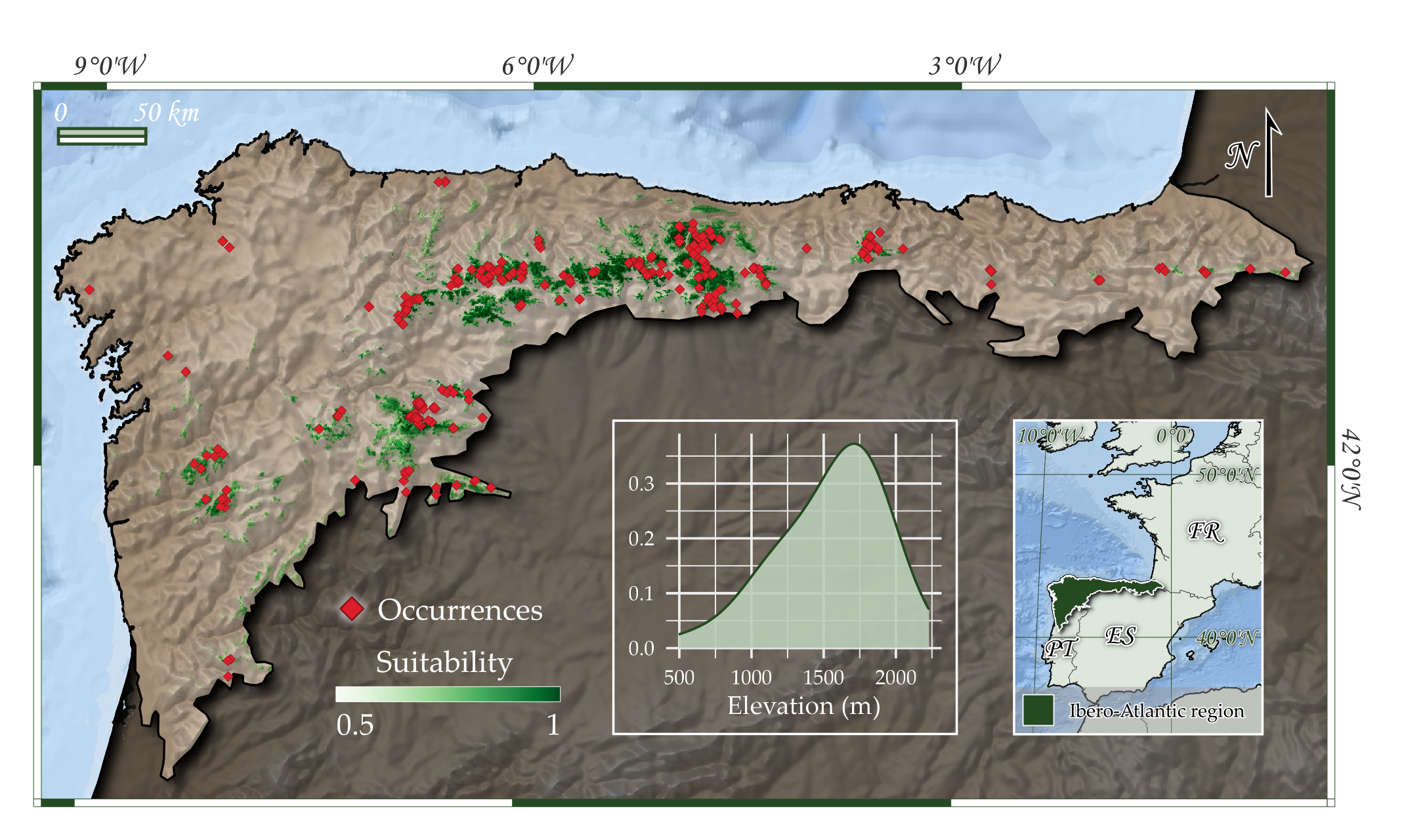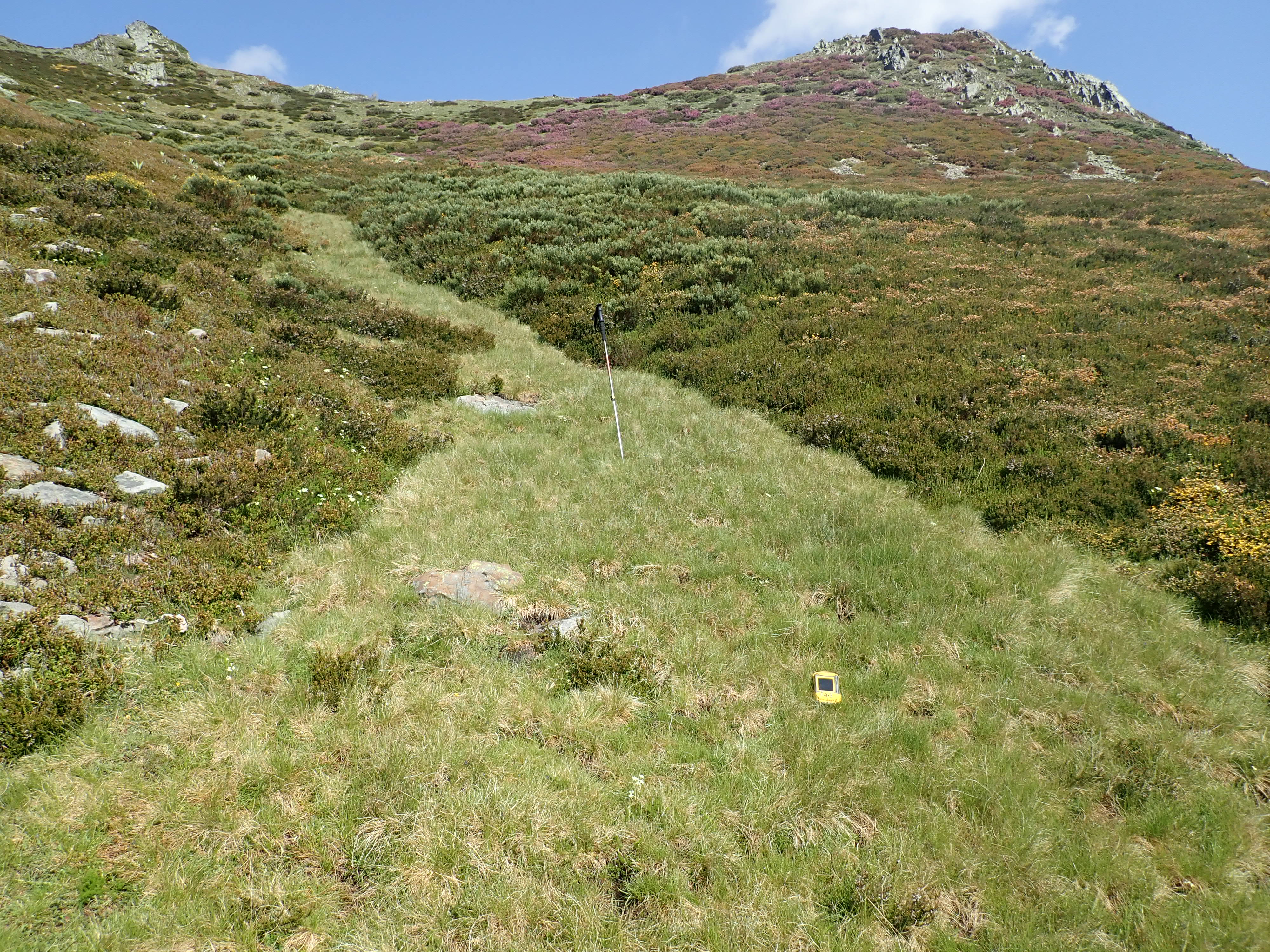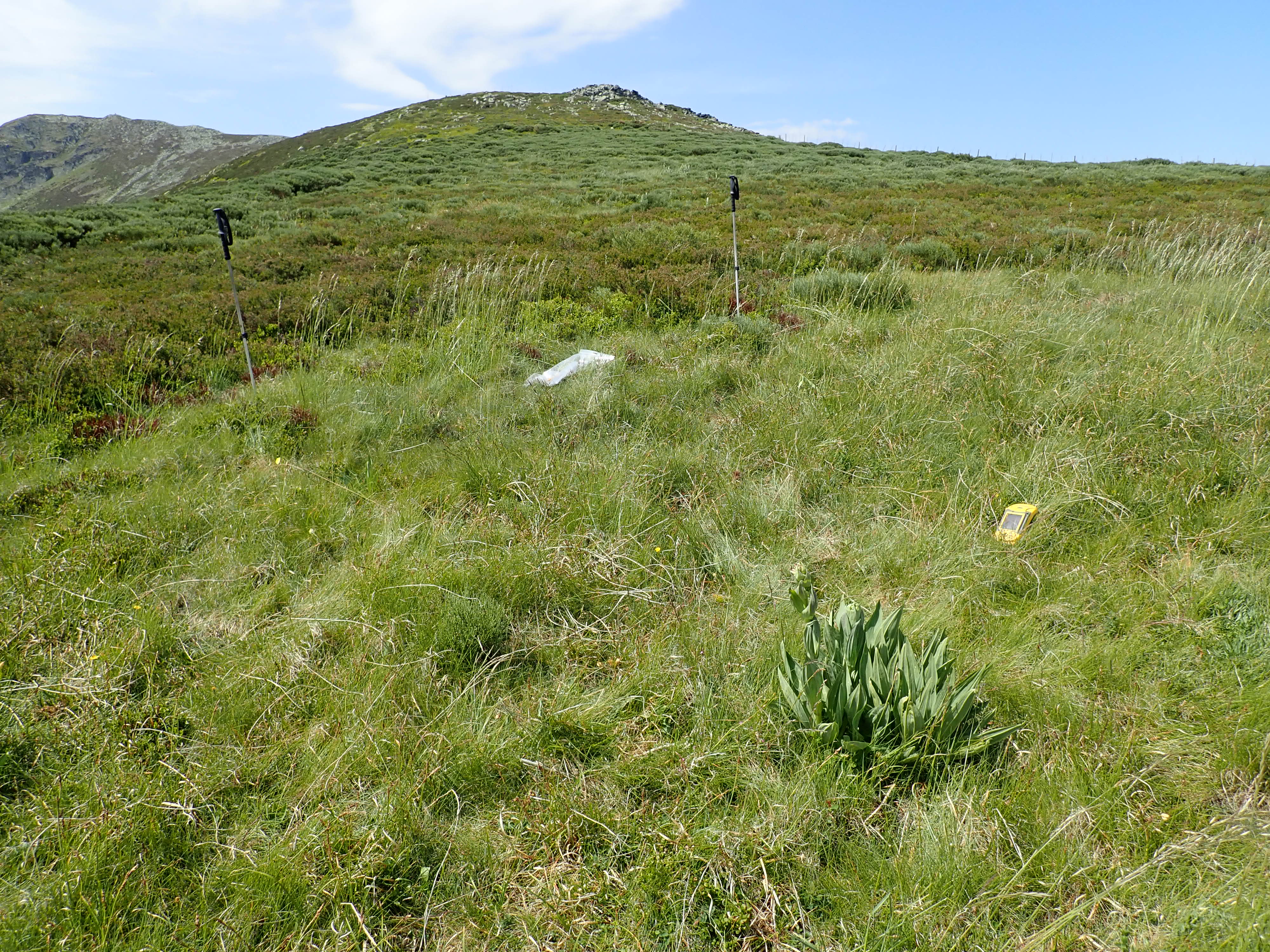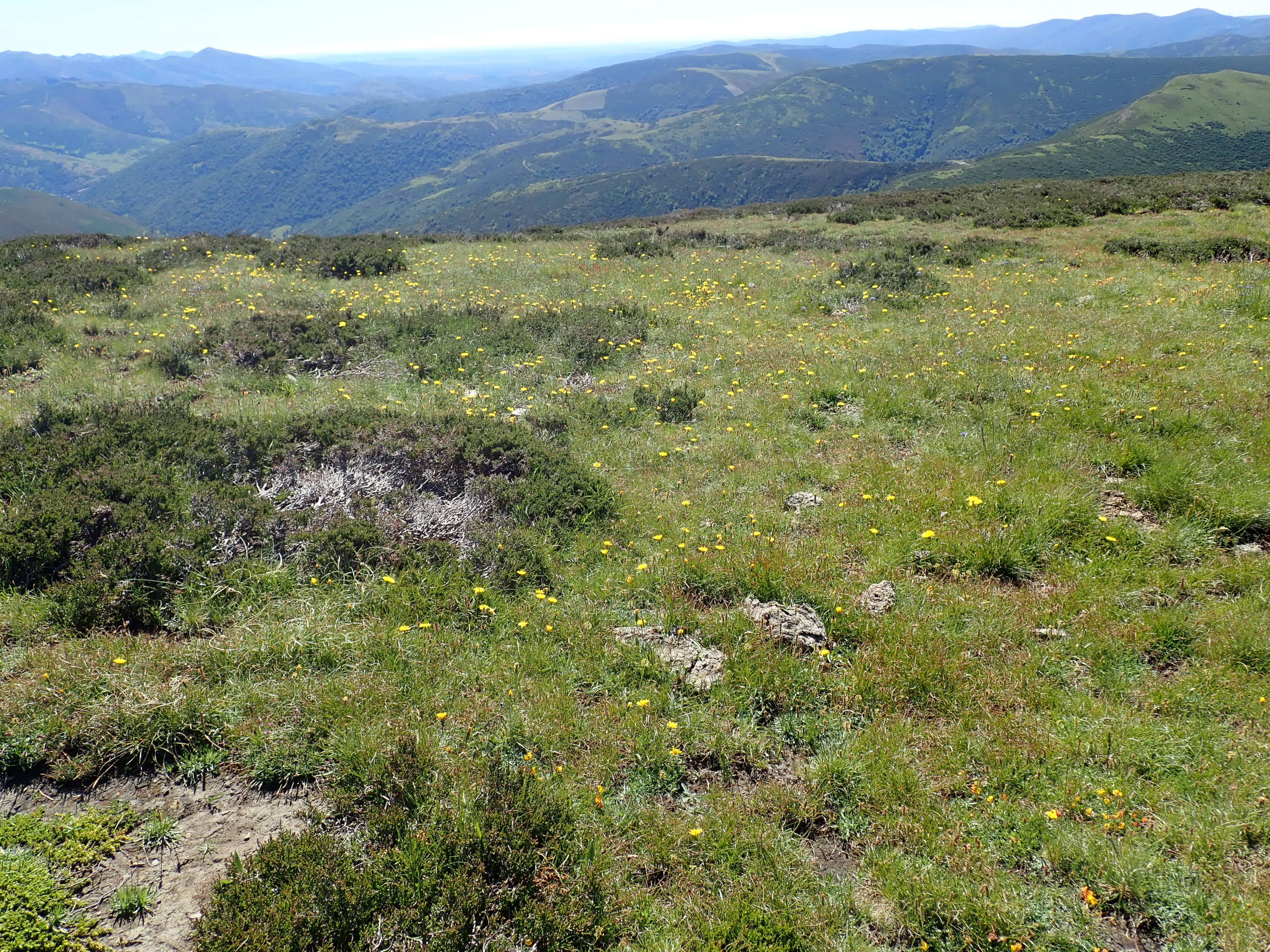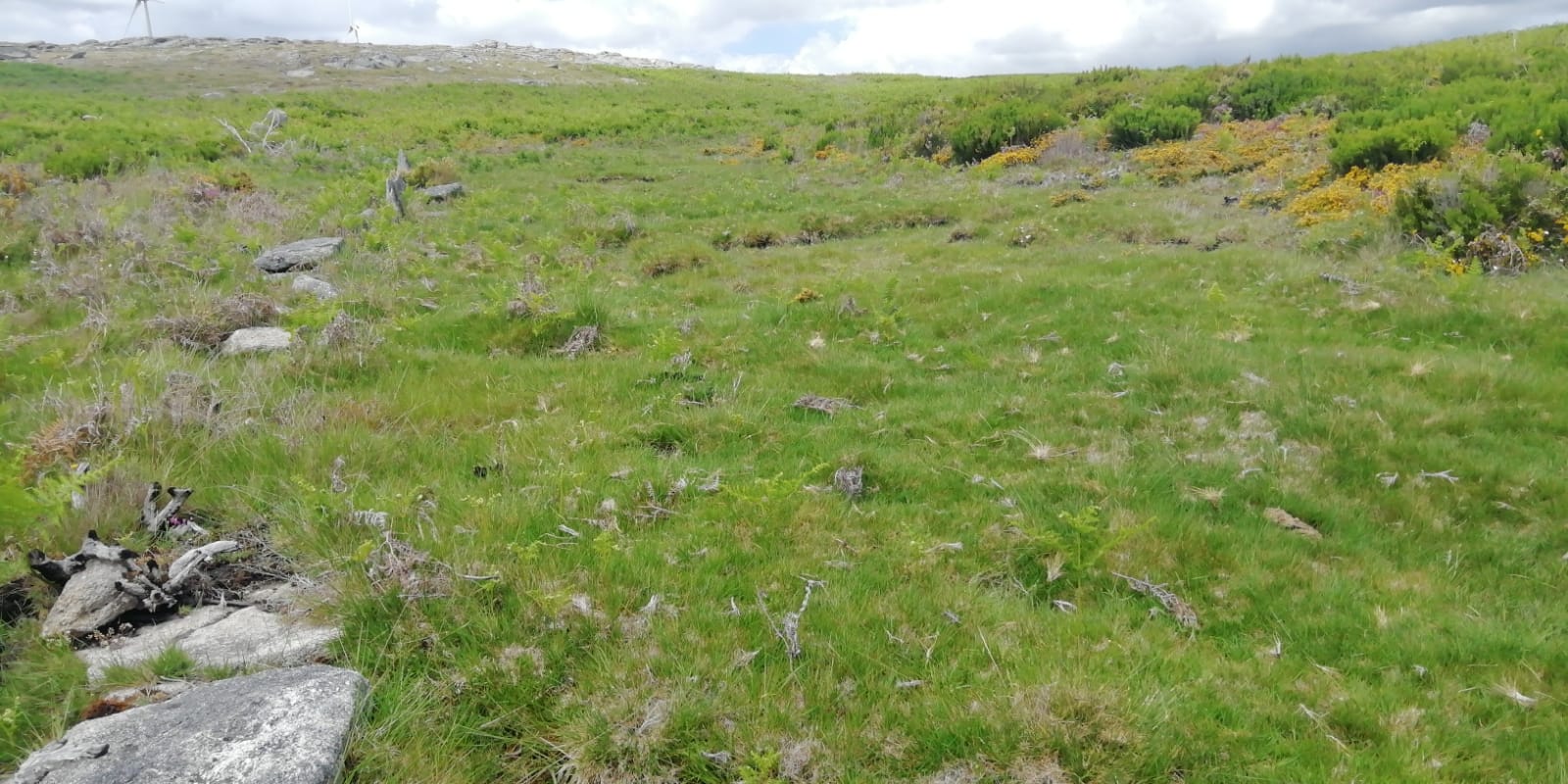R43z Cantabrian Nardus stricta swards
Description
Replacing R1M2 at higher elevations (not without some transitional communities), these short, grazed swards occupy deep, acid, humid but aerated soils, often in a mosaic, generated by differences in grazing pressure and snow pack duration, with S23y, S33z and S421 and, at lower elevations and under more submediterranean, summer-dry climates, with S412. They can also occur in limestone massifs where deep, intensely leached soils develop, like in moraines, colluvia or dolines filled by the clays released by karstification. As explained under R43y, we create a new level IV unit since not all our Nardus grasslands fit confortably in R435 as R43521 (“Cantabrio-Cordilleran oro-Mediterranean mat-grass swards).
Floristic Composition
Frequent species
Nardus stricta
1,
Potentilla erecta
0.52,
Galium saxatile
0.42,
Juncus squarrosus
0.37,
Pilosella officinarum
0.34,
Agrostis capillaris
0.33,
Festuca nigrescens
0.33,
Jasione laevis
0.32,
Lotus corniculatus
0.3,
Trifolium repens aggr.
0.27,
Plantago alpina
0.26,
Danthonia decumbens
0.26,
Calluna vulgaris
0.24,
Festuca rubra
0.22,
Ranunculus bulbosus
0.21,
Anthoxanthum odoratum
0.21,
Meum athamanticum
0.19,
Helictochloa marginata
0.18,
Carex caryophyllea
0.18,
Trifolium pratense
0.17,
Pedicularis sylvatica
0.16,
Luzula multiflora
0.16,
Avenella flexuosa
0.16,
Thymus pulegioides aggr.
0.15,
Poa alpina
0.15,
Erica tetralix
0.14,
Plantago lanceolata
0.13,
Plantago media
0.13,
Gentiana pneumonanthe
0.13,
Carex binervis
0.13,
Colchicum montanum
0.13,
Bellis perennis
0.13,
Trocdaris verticillatum
0.12,
Rumex acetosella
0.12,
Veronica officinalis
0.12,
Thymus praecox
0.12,
Achillea millefolium
0.12,
Polygala vulgaris
0.12,
Galium verum
0.11,
Neoschischkinia truncatula
0.1,
Luzula pediformis
0.1,
Phleum alpinum
0.1,
Polygala serpyllifolia
0.1,
Carex leporina
0.09,
Campanula herminii
0.09,
Carex echinata
0.09,
Vaccinium myrtillus
0.09,
Briza media
0.08,
Hypericum richeri
0.08,
Carex panicea
0.08,
Trifolium alpinum
0.08,
Succisa pratensis
0.08,
Scorzoneroides pyrenaica
0.08,
Euphrasia hirtella
0.07,
Festuca rothmaleri
0.07,
Hypochaeris radicata
0.07,
Gentiana lutea
0.07,
Serratula tinctoria
0.07,
Poa legionensis
0.07,
Agrostis hesperica
0.06,
Lotus pedunculatus
0.06,
Agrostis curtisii
0.06,
Carex pilulifera
0.06,
Cruciata glabra
0.06,
Trifolium thalii
0.06,
Alchemilla xanthochlora
0.06,
Solidago virgaurea
0.06,
Scilla verna
0.06,
Carex nigra
0.06,
Polygala edmundi
0.06,
Luzula campestris
0.06,
Geranium subargenteum
0.06,
Genista anglica aggr.
0.06,
Conopodium majus aggr.
0.06,
Cynosurus cristatus
0.06,
Luzula caespitosa
0.05,
Holcus lanatus
0.05,
Genista micrantha
0.05,
Sagina saginoides
0.05,
Carex lepidocarpa aggr.
0.05,
Leontodon hispidus
0.05
view more...
Indicator species
Nardus stricta 0.99
,
Potentilla erecta 0.42
,
Juncus squarrosus 0.37
,
Galium saxatile 0.35
,
Jasione laevis 0.27
,
Pilosella officinarum 0.25
,
Plantago alpina 0.24
,
Festuca nigrescens 0.21
,
Calluna vulgaris 0.19
,
Danthonia decumbens 0.19
,
Meum athamanticum 0.19
,
Agrostis capillaris 0.17
,
Pedicularis sylvatica 0.16
,
Lotus corniculatus 0.15
,
Luzula multiflora 0.15
,
Carex caryophyllea 0.14
,
Thymus pulegioides aggr. 0.13
,
Festuca rubra 0.13
,
Helictochloa marginata 0.13
,
Gentiana pneumonanthe 0.12
,
Carex binervis 0.11
,
Ranunculus bulbosus 0.11
,
Erica tetralix 0.11
,
Colchicum montanum 0.11
,
Avenella flexuosa 0.1
,
Poa alpina 0.1
,
Veronica officinalis 0.1
,
Phleum alpinum 0.1
,
Polygala vulgaris 0.09
,
Campanula herminii 0.08
,
Polygala serpyllifolia 0.08
,
Plantago media 0.08
,
Hypericum richeri 0.08
,
Trifolium alpinum 0.08
,
Luzula pediformis 0.08
,
Galium verum 0.07
,
Carex leporina 0.07
,
Succisa pratensis 0.07
,
Poa legionensis 0.07
,
Gentiana lutea 0.07
,
Scorzoneroides pyrenaica 0.07
,
Carex panicea 0.06
,
Carex echinata 0.06
,
Rumex acetosella 0.06
,
Vaccinium myrtillus 0.06
,
Trocdaris verticillatum 0.06
,
Geranium subargenteum 0.06
,
Agrostis hesperica 0.06
,
Serratula tinctoria 0.06
,
Polygala edmundi 0.06
view more...
Regional distribution
